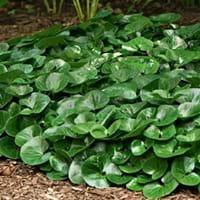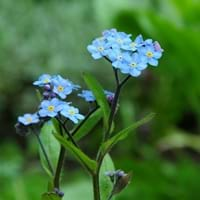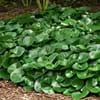Life Span
Annual and Perennial
Annual and Perennial
Type
Broadleaf Evergreen
Flowering Plants, Shrubs
Origin
Western Europe
Eastern Asia
Types
Not Available
Bigleaf hydrangea, Hortensia, Smooth hydrangea, Oakleaf hydrangea, Annabelle
Number of Varieties
Not Available
Habitat
gardens, Lake Sides, Marshy ground, shade of upland trees, Shaded sites, Subtropical climates
Fields, gardens, meadows, rocky outcrops, waste ground, yards
USDA Hardiness Zone
4-8
Not Available
AHS Heat Zone
Not Available
8 - 1
Sunset Zone
Not Available
21,22
Habit
Spreading
Clump-Forming
Flower Color
Green, Purple, Brown
Blue, White
Flower Color Modifier
Bicolor
Bicolor
Fruit Color
Not Available
Not Available
Leaf Color in Spring
Dark Green
Green, Gray Green
Leaf Color in Summer
Dark Green
Green, Gray Green
Leaf Color in Fall
Dark Green
Green, Gray Green
Leaf Color in Winter
Dark Green
Light Green
Leaf Shape
Cushion
Lanceolate
Plant Season
Spring, Summer, Fall, Winter
Spring, Summer
Sunlight
Partial shade, Full Shade
Full Sun, Partial Sun
The pH of Soil
Acidic, Neutral
Acidic, Neutral
Soil Drainage
Well drained
Well drained
Bloom Time
Late Spring
Early Spring, Spring, Late Spring, Early Summer, Summer, Late Summer
Tolerances
Not Available
Not Available
Where to Plant?
Container, Ground
Ground
How to Plant?
Divison, Rhizome division
Divison, Seedlings
Plant Maintenance
Low
Medium
Watering Requirements
Average Water Needs
Do Not over Water
In Summer
Average Water
Lots of watering
In Spring
Moderate
Moderate
In Winter
Average Water
Average Water
Soil pH
Acidic, Neutral
Acidic, Neutral
Soil Drainage Capacity
Well drained
Well drained
Sun Exposure
Partial shade, Full Shade
Full Sun, Partial Sun
Pruning
Don't prune in winter, Prune in spring, Remove dead branches, Remove dead leaves
Remove damaged leaves, Remove dead branches, Remove dead leaves
Fertilizers
All-Purpose Liquid Fertilizer
All-Purpose Liquid Fertilizer
Pests and Diseases
Ants, Slugs, Snails
Red blotch
Plant Tolerance
Not Available
Drought
Flowers
Insignificant
Showy
Flower Petal Number
Not Available
Single
Foliage Texture
Medium
Medium
Foliage Sheen
Glossy
Matte
Attracts
Insects
Bees, Flies
Allergy
no allergic reactions
Chest tightness, Diarrhea, Dizziness, Nausea, Vomiting
Aesthetic Uses
Showy Purposes
Beautification, Cottage Garden, Ground Cover, Showy Purposes
Beauty Benefits
No Beauty Benefits
Not Available
Environmental Uses
Air purification
Air purification
Medicinal Uses
Ear ache, Fever, Heart problems, Menstrual Disorders, Snakebite
Fever, Kidney problems, Urinary tract problems
Part of Plant Used
Whole plant
Flowers, Root
Other Uses
Not Available, Used in making tooth powder
Culinary use, Used as Ornamental plant
Used As Indoor Plant
No
No
Used As Outdoor Plant
Yes
Yes
Garden Design
Edging, Groundcover
Bedding Plant, Cottage garden, Edible, Hanging Basket, Wildflower
Botanical Name
ASARUM europaeum
Myosotis arvensis
Common Name
European Wild Ginger
Forget-Me-Not
In Hindi
यूरोपीय जंगली अदरक
Forget-Me-Not
In German
Europäische Wild Ginger
Forget-Me-Not
In French
Wild Ginger européenne
Forget-Me-Not
In Spanish
Wild Ginger Europea
Arce japonés
In Greek
Ευρωπαϊκή Wild Ginger
Forget-Me-Not
In Portuguese
Wild Ginger Europeia
Forget-Me-Not
In Polish
Kopytnik pospolity
Forget-Me-Not
In Latin
Gingiberi Europae Wild
Forget-Me-Not
Phylum
Magnoliophyta
Magnoliophyta
Class
Magnoliopsida
Magnoliopsida
Family
Aristolochiaceae
Boraginaceae
Clade
Angiosperms, Magnoliids
Not Available
Tribe
Not Available
Not Available
Subfamily
Not Available
Not Available
Number of Species
Not Available
Difference Between European Wild Ginger and Field Forget Me Not
If you are confused whether European Wild Ginger or Field Forget Me Not are same, here are some features about those plants to help you choose better. Many people think that these two plants have the same characteristics, but one can see European Wild Ginger and Field Forget Me Not Information and learn more about it. Fertilizers required for proper growth of European Wild Ginger are All-Purpose Liquid Fertilizer, whereas for Field Forget Me Not fertilizers required are All-Purpose Liquid Fertilizer. Hence, one should know the basic difference between European Wild Ginger and Field Forget Me Not if you are planning to have them in your garden to enhance its beauty.
<
Flowering PlantsImportance of European Wild Ginger and Field Forget Me Not
Want to have the most appropriate plant for your garden? You might want to know the importance of European Wild Ginger and Field Forget Me Not. Basically, these two plants vary in many aspects. Compare European Wild Ginger and Field Forget Me Not as they differ in many characteristics such as their life, care, benefits, facts, etc. Every gardener must at least have the slightest clue about the plants he wants to plant in his garden. Compare their benefits, which differ in many ways like facts and uses. The medicinal use of European Wild Ginger is Ear ache, Fever, Heart problems, Menstrual Disorders and Snakebite whereas of Field Forget Me Not is Fever, Kidney problems and Urinary tract problems. European Wild Ginger has beauty benefits as follows: No Beauty Benefits while Field Forget Me Not has beauty benefits as follows: No Beauty Benefits.
Compare Facts of European Wild Ginger vs Field Forget Me Not
How to choose the best garden plant for your garden depending upon its facts? Here garden plant comparison will help you to solve this query. Compare the facts of European Wild Ginger vs Field Forget Me Not and know which one to choose. As garden plants have benefits and other uses, allergy is also a major drawback of plants for some people. Allergic reactions of European Wild Ginger are no allergic reactions whereas of Field Forget Me Not have Chest tightness, Diarrhea, Dizziness, Nausea and Vomiting respectively. Having a fruit bearing plant in your garden can be a plus point of your garden. European Wild Ginger has no showy fruits and Field Forget Me Not has no showy fruits. Also European Wild Ginger is not flowering and Field Forget Me Not is not flowering . You can compare European Wild Ginger and Field Forget Me Not facts and facts of other plants too.



